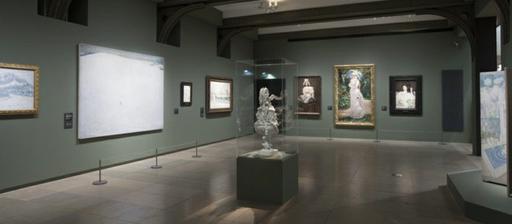"Rare are the colours that can boast such a long lasting and universal symbolism: today just as in Antiquity, white, the symbol of divine light, signifies purity and innocence. 19th century western society continued this tradition by requiring children and women to wear white: both were still ascribed a certain otherworldliness, romantic as well as sexual.
However, at the end of the century, white also became a vehicle for modernity and emancipation. As the doctrine of hygiene advanced, white was used much more widely in society, and became the colour of the medical world and of sport.
Wellbeing was now linked with light and cleanliness: bourgeois interiors embraced white, to the detriment of dark eclectic decors.
The reason why the artists and architects of the Belle Epoque were so interested in white, comes above all from the key role it played in the aesthetic revolutions of the second half of the century: whether it was Whistler's Symphony in White or the Impressionist snowscapes, white became the manifesto of a new style of painting that rendered perceptions and emotions.
Without abandoning the paradigm of purity – and the at times repressive power linked to this quality – white became enriched with new qualities, it became the medium of a desire for radical neutrality, for total regeneration. Thus begins the century of Malevich's White on White (1918) and of the "white cube" that still typifies the leading modern and contemporary art spaces today."
© Musée d'Orsay 2006
It's a painting I'll come back to, to visit it from time to time.


























